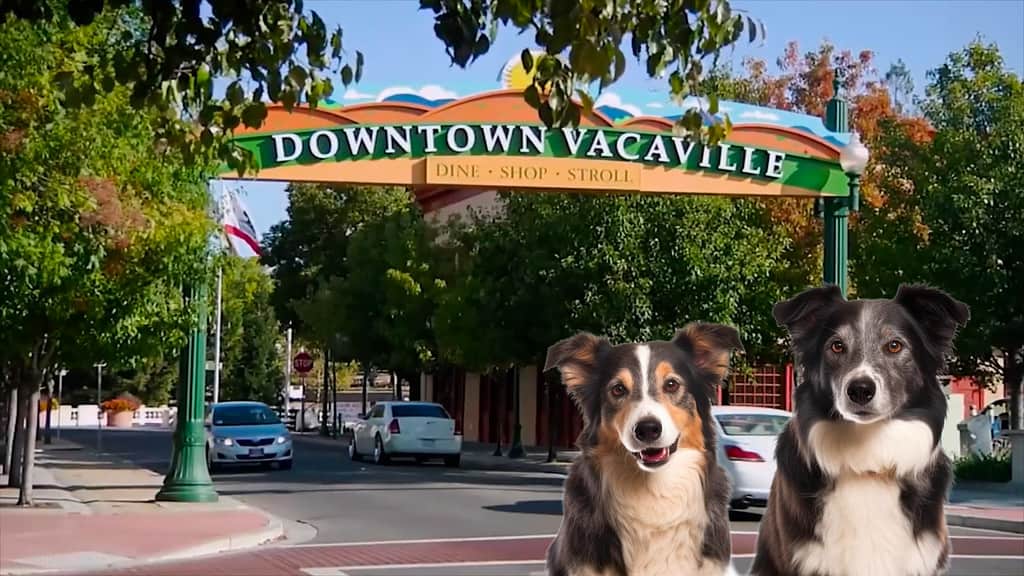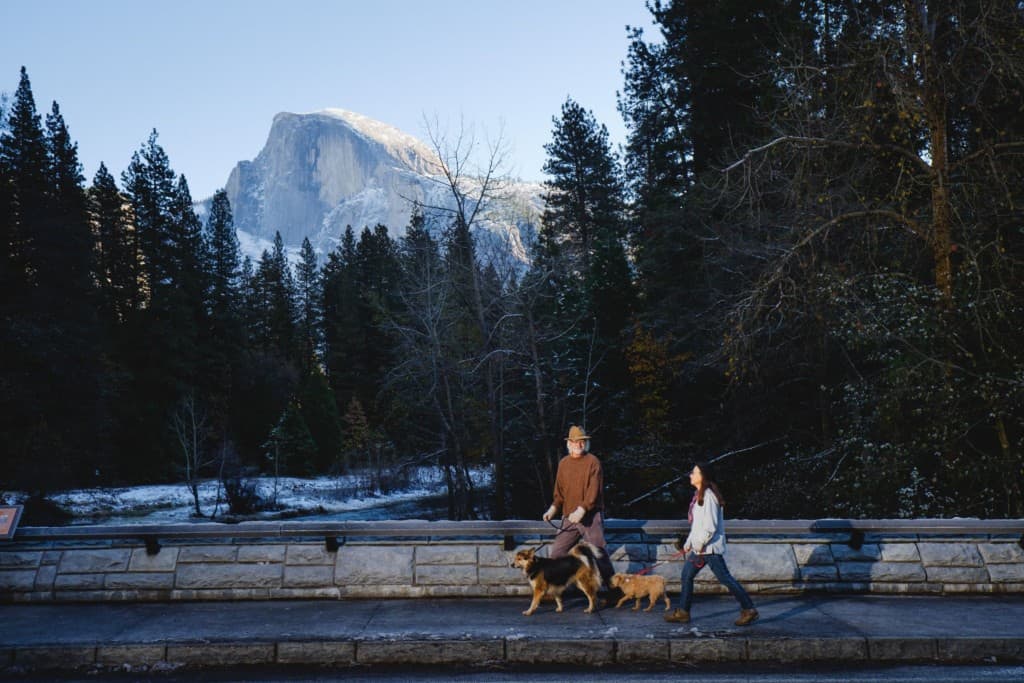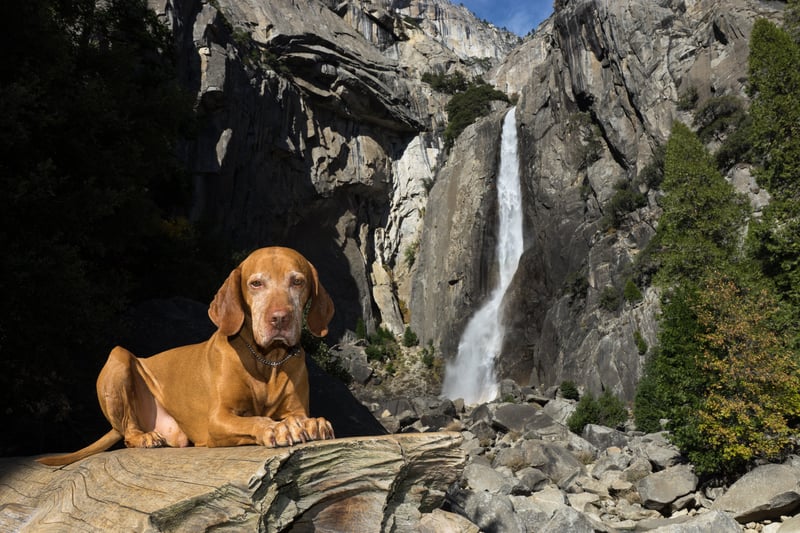Why hurry to Yosemite National Park when the journey can be as rewarding as the destination? The Yosemite Region encompasses four gateway counties, each with its own unique set of attractions. DogTrekker is celebrating Yosemite’s 150th anniversary with a look at places and diversions for DogTrekkers to check out along the major highway corridors leading to the iconic park.

Cabo in Groveland. Photo: Doug Pieper
Trek with us along Highway 120 through the North (Big Oak Flat) Entrance in Tuolumne County.
The rugged area known as Big Oak Flat has a history much more colorful than its name. John Savage and his five Native American wives, who opened a trading post near a grand old oak tree that gave the place its name, settled it during the earliest days of the Gold Rush.
Modern Highway 120 through dog-friendly Groveland bypasses the original Big Oak Flat wagon route, but you can still drive a precarious section of the original route, signed Old Priest Grade. Look for the signs as you approach Groveland; the OPG will reconnect with Highway 120 after a few hair-raising miles. (Note: If your human or canine passengers are prone to carsickness, you might want to skip this scenic detour!)
Travelers coming from Sacramento or the Bay Area have several choices for getting from Highway 99 to Groveland and the Big Oak Flat park entrance. Here are some options:
• Highway 132 out of Modesto follows the Tuolumne River gorge to the colorful Gold Rush town of Coulterville, where the historic and dog-friendly Hotel Jeffery beckons DogTrekkers to stay overnight or just sit a spell on the porch. The entire town, from Magnolia Saloon’s bat-wing doors, to the antique shops, artifacts and colorful locals, harks back to the iconic TV Westerns of old.
From Coulterville, head north through Greeley Hill to Smith Station Road and up to Highway 120. This is the recently designated John Muir Highway, which follows the achingly picturesque route the famous naturalist took as he walked from San Francisco to Yosemite in 1868.
• The more heavily traveled route to Yosemite is Highway 120 out of Manteca, best known to Highway 99 passers-by as home to an enormous Bass Pro Shop, where you can pick up fishing gear as well as dog supplies for your trip (sorry, no dogs allowed inside). The road begins its twisty climb into the mountains at Oakdale, where a quick stop at the Visitors Center will yield maps and literature to help guide your trip.
The Stanislaus National Forest surrounding Highway 120 is a recreational wonderland with many day-hike opportunities. If you have four-wheel drive, get a map and make a detour to Trumbull Peak Special Interest Area, where a 45-foot fire lookout tower looms large over the Merced River. On a clear day, the tower offers panoramic views of Yosemite Valley. While we don’t recommend hauling Fido up the stairs, the two of you will enjoy hiking on surrounding trails.
Groveland, where many Yosemite visitors make base camp for forays into the park, is another Gold Rush town worthy of exploration. But if you arrive on a hot afternoon and have energy to spare, keep going. About 15 miles past the town, on the right-hand side of the road, is Rainbow Falls and Pools, a series of popular and very picturesque swimming holes on the South Fork of the Tuolumne River. A parking lot and restrooms are provided, access is free and your pup is welcome to splash in the pools with you.
At the end of an active day, it’s nice to come home to a hot shower and a soft bed—and the beds don’t get any softer than the “mile high” feather versions at the very dog-friendly Groveland Hotel, whose fine-dining restaurant spills onto a dog-friendly patio. Offering similar Victorian charm is the Hotel Charlotte, with three pet-friendly rooms and a location right in the center of this highly walkable town.






